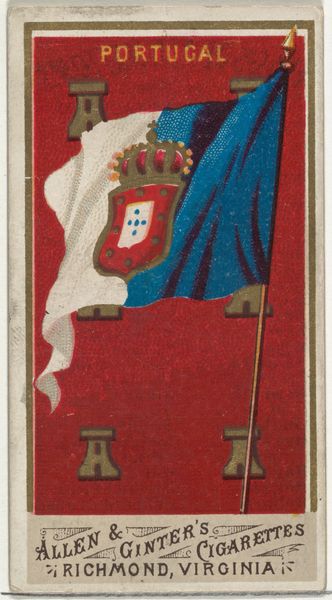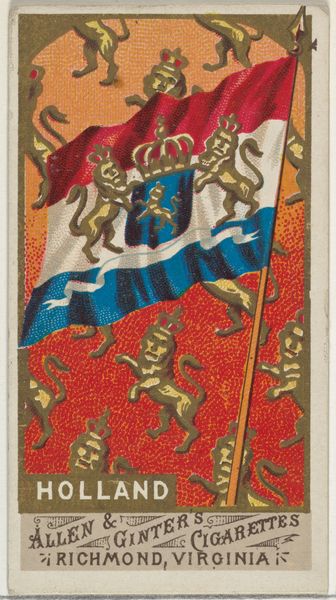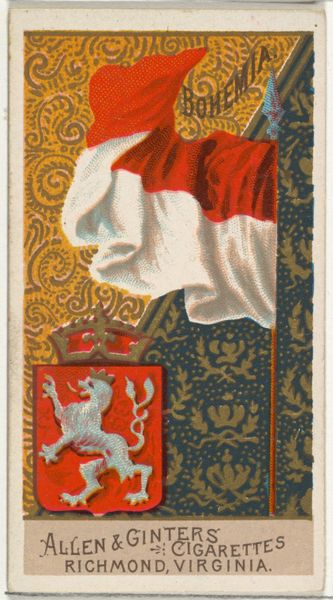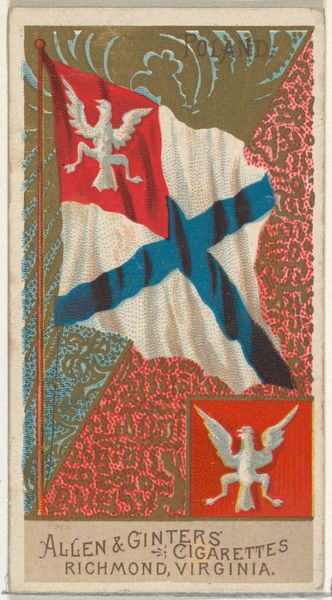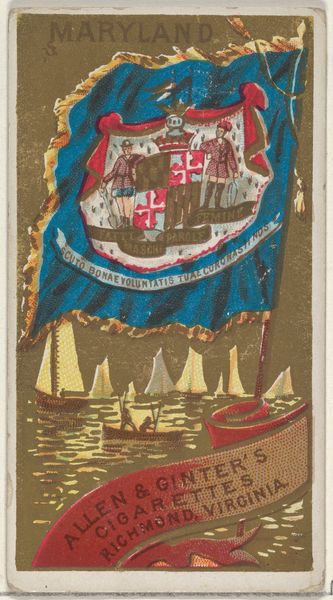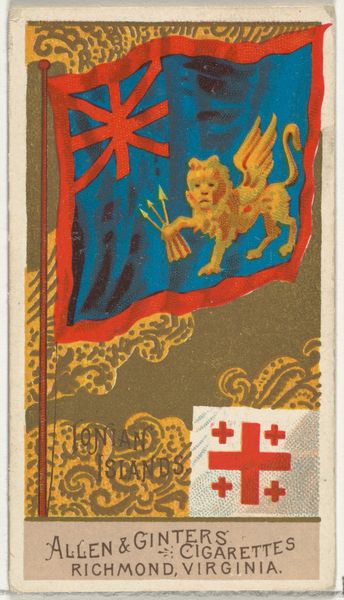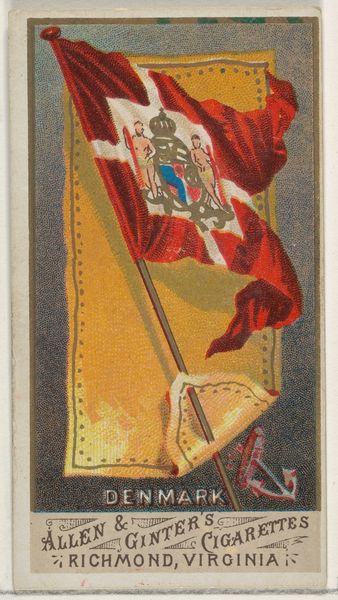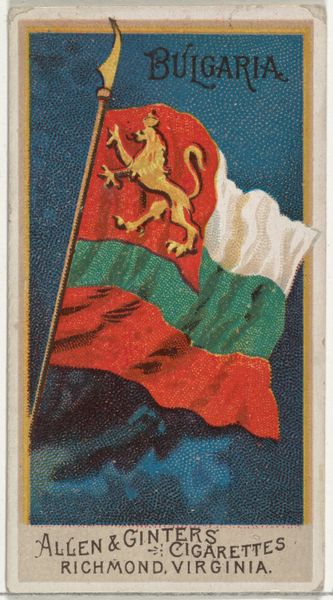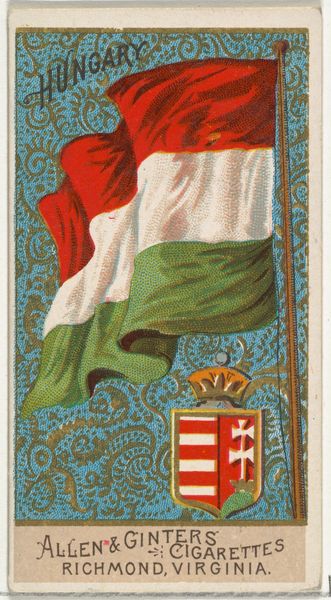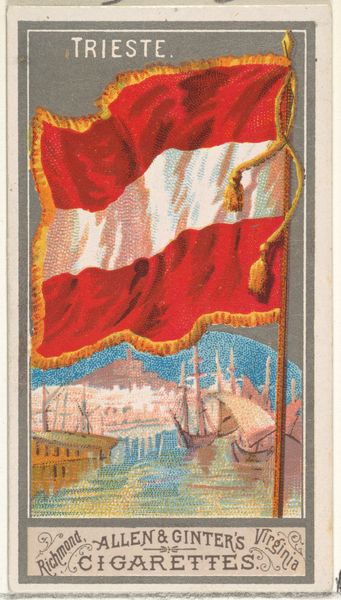
Serbia, from Flags of All Nations, Series 2 (N10) for Allen & Ginter Cigarettes Brands 1890
0:00
0:00
drawing, graphic-art, print, textile
#
drawing
#
graphic-art
#
pasteup
# print
#
textile
#
academic-art
Dimensions: Sheet: 2 3/4 x 1 1/2 in. (7 x 3.8 cm)
Copyright: Public Domain
Curator: This is "Serbia, from Flags of All Nations, Series 2," created around 1890 by Allen & Ginter as part of a series of cigarette cards. Editor: My first impression is of a miniature tapestry. The textures look surprisingly tactile for a printed image. Curator: That's interesting. The print medium suggests mass production, appealing to consumer culture while subtly teaching geography. The image isn't just a flag; it's also a product advertisement. Consider the commercial context for these collectible cards given away with cigarettes. Editor: Precisely. I notice the textile-like rendering of the flag, especially how the dyes suggest layers and folds that give a palpable depth. Curator: The means of producing that illusion are key here. Lithography allowed for detailed replication, bringing the imagery of nationhood to a wide audience, essentially building up cultural awareness hand-in-hand with product branding. Editor: The colors are surprisingly bold. The red, blue, and white feel deliberate, as is the shield placed prominently. How much did this presentation influence the average consumer's view of Serbia, I wonder? Curator: It brings into play the broader societal fascination with nation-states during the late 19th century. Allen & Ginter capitalized on the emergent national identities in their promotional items. Editor: And they linked it directly to something as mundane as a cigarette! A commodity packaged alongside these aspirational symbols. The implications for how ideas are spread and consumed... intriguing! Curator: It underscores the intricate dance between consumerism, art, and social constructs of the time. Editor: Definitely gives a lot to consider regarding art's public role, even within unexpected spaces like commercial packaging.
Comments
No comments
Be the first to comment and join the conversation on the ultimate creative platform.
